Approximately, twenty-odd patients consult me daily with severe itching in the ear. A lot of people around me, including some fellow doctors, indulge in this habit. There is a transient pleasant sensation associated with tickling, due to the stimulation of the nerves in the skin. Itching the ear is habit-forming and almost addictive for some people. The skin of the ear canal is very delicate and easily injured by the scratching. Injury to the protective skin barrier lets in infection, further increasing the itching. Understanding this vicious cycle will help to break the habit. If the itch is intolerable, it is better to get the help of an otorhinologist, rather than giving in to the temptation. Appropriate soothing agents help temporarily, but the problem tends to recur if the habit is not corrected. An itch for an itch is no solution. Even the best doctor is rendered helpless by this lack of self-discipline.
Neurodermatitis is a skin disorder associated with severe itching and can occur anywhere in the body. A vigorous rub over the ear is enough to traumatize and trigger swelling and itching. The pain that follows these itching sessions can be excruciating. Medications will be needed to reduce swelling and pain. Avoidance of scratching and rubbing is essential for a cure even though it may be very tempting to soothe the itch. Soothing cremes and lotions and oral medicines to reduce itching will further aid the treatment.
Less common causes of itching are allergy and fungal infections. The former is usually associated with allergic manifestations all over the body. The latter is more common in humid climates or swimmers. Some people have the habit of washing their ear canals with soap and water while bathing. The ear canal being tortuous prevents this water from draining. Moisture in the ear tends to favour the growth of fungi and bacteria. Attempts to dry with a towel can be traumatic and leads to itching. Nature has its mechanism to keep the ears clean. It is not required to wash or clean the ear canals at all. Fungal infections have to be treated appropriately by the doctor.

Earbuds or Q tips, as the commercially available cotton swab sticks are called, is a misnomer. These are not suitable for use in the ear as they are usually quite stout and tend to push the debris deeper into the ear canal. Children usually tend to copy adults and the easy availability of earbuds at home, encourages the habit in them too. Many patients have argued with me, as to how it was alright for a doctor to use a swab- stick, while the same was forbidden for them. As an E.N.T. doctor, I am trained to do so safely and am also armed with the knowledge of anatomy to avoid any damage to the structures in the ear. Moreover, the swab stick that the doctor uses is usually custom made for the purpose, slender and flexible. A doctor is also supported by good lighting and magnification to aid visibility as with a microscope. The doctor uses suctioning and sometimes even syringing with warm water to remove the stubborn wax, in addition to the use of swab sticks. Surely, this is not the same as self- cleaning!
The never-ending list of things that are used to itch the ear include fingers, pins, feathers, matchsticks, earpicks etc. The earpick is a small, spoon-shaped metallic device, used traditionally to clean the ear canal. However, it is an inherently dangerous piece of equipment and should never be used in the ear canal. A colleague of mine had attached a metallic ear- pick to his key chain, just to scratch his ear at will. He presented to us with excruciating earache on several occasions but could not be convinced to change his habit. Finally, the damage to his ear canal was severe enough to be demonstrated on a CT scan. Only then did he decide to change his habit and of course, his keychain!



Habits die hard…
Nonetheless, it is a good piece of information; thank you.
Regards.
Thanks for the response.
Don’t worry, awareness is the first step towards change.
Excellent information!
Thank you, Shobha